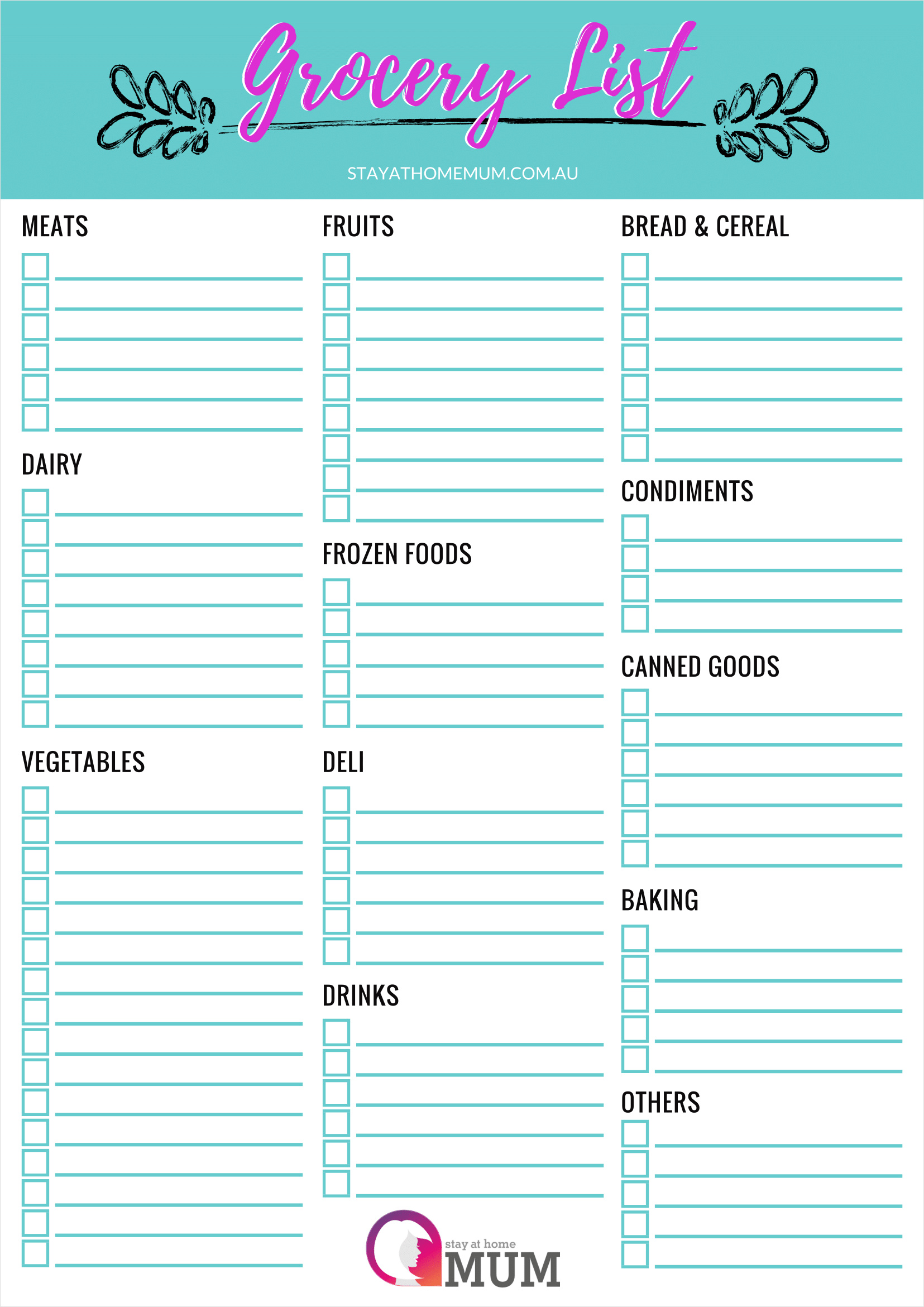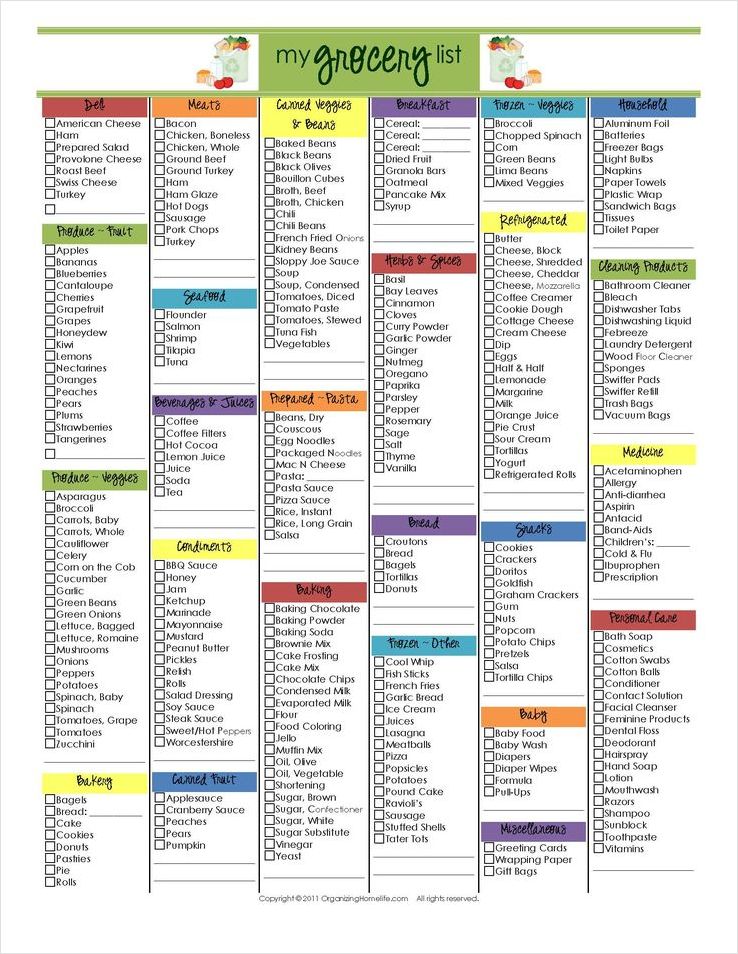
When it comes to grocery shopping, having a well-planned food shopping checklist can make all the difference. Whether you’re a seasoned pro or a beginner, having a comprehensive list can help you stay organized, save time, and ensure you never forget any essential items.
In this article, we will guide you through creating the ultimate food shopping checklist and provide you with valuable tips to make your grocery shopping experience more efficient and enjoyable.
Why Do You Need a Food Shopping Checklist?
Having a food shopping checklist is essential for several reasons. Firstly, it helps you stay organized and ensures that you don’t miss any important items when you’re at the store. With a comprehensive list, you can easily check off items as you go, making your shopping experience more efficient.
Secondly, a food shopping checklist can help you save money. By planning your meals and making a list of the ingredients you need, you can avoid impulse purchases and unnecessary spending. It also helps you stick to your budget and avoid buying items that you already have at home.
Lastly, having a checklist can help you make healthier food choices. By planning your meals and snacks, you can ensure that you have a variety of nutritious options on hand. It also prevents you from buying unhealthy impulse snacks or processed foods that may not align with your dietary goals.
What Should You Include in Your Food Shopping Checklist?
Now that you understand the importance of having a food shopping checklist, let’s take a look at what items you should include. Remember, your checklist may vary depending on your dietary preferences, restrictions, and meal-planning habits. However, here are some general categories to consider:
1. Fresh Produce
Include a variety of fruits and vegetables that you enjoy and that are in season. Aim for a mix of colors to ensure you’re getting a wide range of nutrients.
2. Pantry Staples
These are items that you use regularly and can be stored for a long time. Examples include rice, pasta, canned goods, cooking oils, spices, and condiments.
3. Proteins
Include a variety of protein sources such as chicken, fish, tofu, beans, and lentils. Take into account your dietary preferences and any specific nutritional needs.
4. Dairy and Dairy Alternatives
If you consume dairy products, include items like milk, cheese, and yogurt. If you prefer dairy alternatives, consider options like almond milk or soy-based products.
5. Snacks and Beverages
Include healthy snack options like nuts, seeds, granola bars, and fresh or dried fruits. Don’t forget to add beverages like water, tea, or coffee to your list.
6. Bakery and Bread
If you enjoy bread or bakery items, add them to your list. Consider whole grain options for added nutritional value.
7. Household and Cleaning Supplies
Don’t forget to include items like paper towels, cleaning products, and any other household essentials you may need.
8. Personal Care Items
If you like to purchase personal care items from the grocery store, add them to your list. This may include items like shampoo, soap, toothpaste, or skincare products.




Tips for Using Your Food Shopping Checklist
Now that you have your food shopping checklist ready, here are some tips to make the most out of it:
- Plan your meals: Before you go shopping, take some time to plan your meals for the week. This will help you determine what ingredients you need and prevent you from buying unnecessary items.
- Stick to your list: Once you’re at the store, try your best to stick to the items on your checklist. Avoid impulse purchases and stay focused on your meal plan.
- Organize your list: Arrange your checklist according to the layout of the store. This will help you navigate through the aisles more efficiently and save time.
- Check your pantry: Before you shop, take a quick inventory of what you already have at home. This will prevent you from buying duplicate items and help you make the most out of your groceries.
- Shop with a full stomach: Avoid shopping on an empty stomach, as it can lead to impulsive purchases and unhealthy food choices.
- Consider online shopping: If you prefer to avoid crowded stores or have a busy schedule, consider online grocery shopping. Many stores offer convenient delivery or pick-up options.
- Be flexible: While having a checklist is important, be open to substitutions or new items that catch your eye. Grocery shopping should be an enjoyable experience, so don’t be afraid to try something new.
- Review and update: Regularly review and update your food shopping checklist to ensure it reflects your changing dietary needs and preferences.
Conclusion
A well-planned food shopping checklist is an essential tool for smart and efficient grocery shopping. By having a comprehensive list, you can stay organized, save money, and make healthier food choices. Remember to plan your meals, stick to your list, and be flexible when necessary. With these tips in mind, you’ll be well-prepared for your next grocery shopping trip.
Food Shopping Checklist Template Word – Download